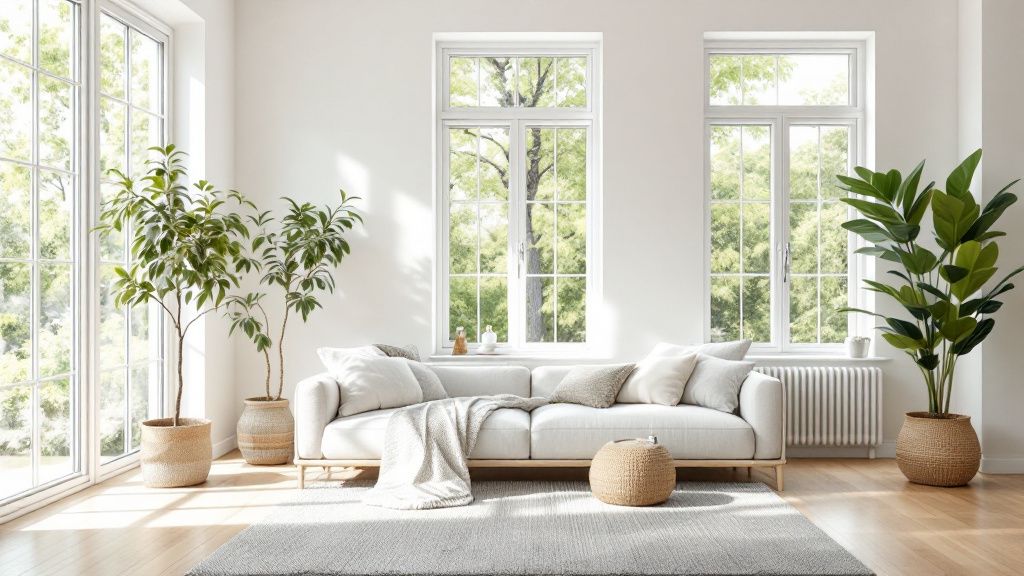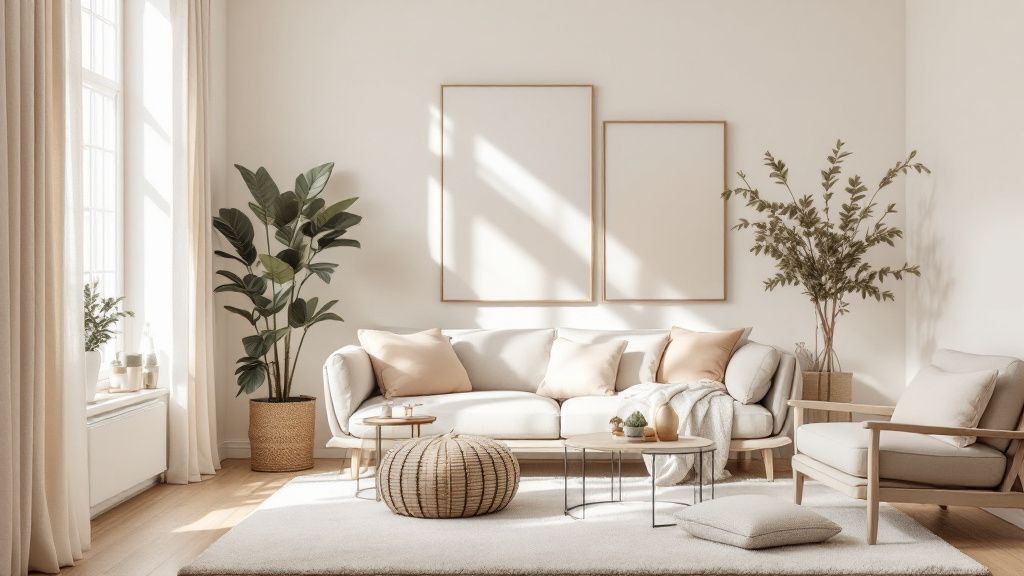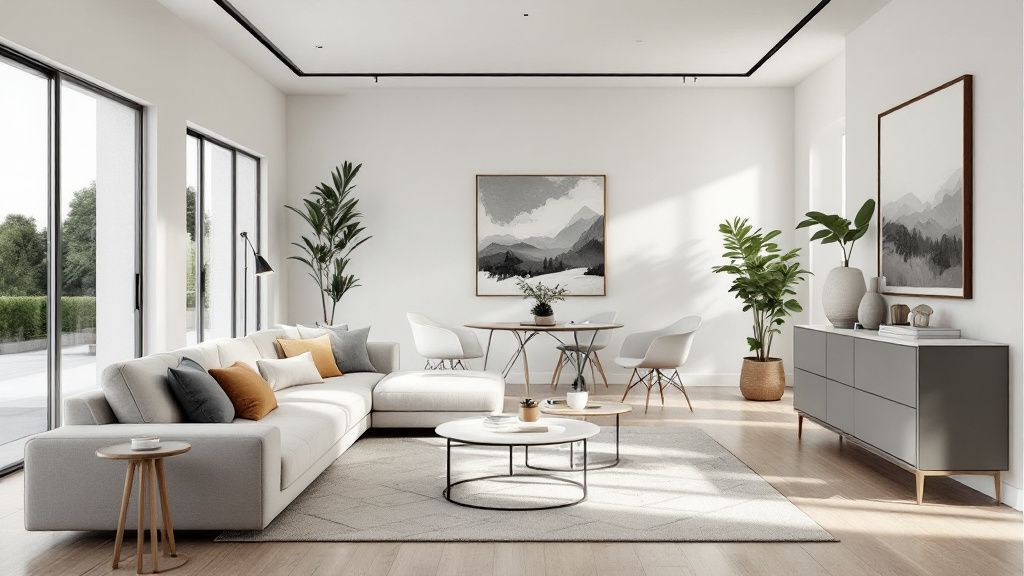Maximizing Natural Light in Cloudy Oregon Homes
- Travis Andersen

- May 26
- 6 min read
Key Takeaways
In cloudy Oregon, transforming your home to capture as much natural light as possible becomes an art. With overcast skies often dominating, you'll want to harness every beam that filters through. Start by strategically positioning mirrors opposite windows to amplify incoming daylight, creating a sense of openness and warmth. Additionally, opt for sheer curtains or blinds that can diffuse the light without blocking it entirely. Choosing light paint colors on walls and ceilings can also help reflect more light throughout your space. Consider incorporating energy-efficient light fixtures that complement natural illumination, enhancing both brightness and home energy efficiency in your cozy Oregon retreat.

Strategically Placing Windows for Optimal Light
To maximize natural light in Oregon's often-cloudy climate, consider the strategic placement of windows. South-facing windows are your best allies since they capture the most sunlight throughout the day, even during winter. Install large, unobstructed windows to flood your rooms with soothing natural light, reducing the need for artificial ones and thus, improving home energy efficiency.
East-facing windows greet the morning sun, making them ideal for spaces where you want to soak up the early rays, like dining areas or kitchens. These windows help create a warm, welcoming atmosphere as you start your day. Consider adding light fixtures with dimmers here to heighten brightness during darker afternoons.
One of the most frequently asked questions about maximizing light is how window placement impacts energy usage. When positioned effectively, strategically placed windows help maintain indoor temperatures, reducing the need for additional heating or cooling. This design choice not only enhances light but also supports your home's energy efficiency.
West-facing windows provide abundant afternoon sunlight, perfect for living or recreational areas where evening activities unfold. Yet, this orientation may require shading solutions to prevent overheating during peak sunny hours. Thoughtful window placement bathes your home in balanced light, making it a luminous haven amidst Oregon's overcast skies.

Choosing Light Colors for Walls and Décor
To harness natural light in your cloudy Oregon home, consider selecting light colors for your walls and décor. Pale shades, like soft whites, pastel blues, and gentle greys, can dramatically enhance light distribution by reflecting sunlight more effectively. These hues transform spaces into brighter, airier environments, while complementing any interior style. When choosing paint or wallpaper, focus on finishes with a subtle sheen to further amplify the light.
The impact of light colors extends beyond walls to your décor choices. Opt for light-toned furniture, cushions, and rugs to promote a sense of spaciousness and continuity. This consistent palette helps illuminate each room, making energy-efficient decisions such as minimizing the need for artificial lighting. Integrating mirrors or metallic accents can also enhance reflective qualities, further brightening the overall atmosphere.
One unpopular opinion about maximizing natural light is that entirely white rooms can feel cold or sterile. However, incorporating soft textures and natural materials can counteract this perception. Adding wood features, houseplants, or tactile fabrics like cotton and wool not only maintains warmth but also adds depth to a light-colored space. The artful mix of elements prevents a minimalist design from feeling too stark.
When selecting light fixtures, lean towards ones that harmonize with your chosen color scheme. Fixtures with clean lines and light-colored or transparent materials can seamlessly blend within your décor, subtly enhancing the natural light without overpowering it. Adjustable lighting options are practical additions, allowing you to control brightness according to the time of day and varied light conditions.
The strategic use of light colors within your home's interiors not only maximizes available sunlight but also boosts home energy efficiency. By establishing an inviting, luminous ambiance, you transform your Oregon home into a serene retreat, even amidst the clouds. This thoughtful approach nurtures a sense of calm and elevates the everyday living experience.

Using Mirrors to Amplify Natural Light
Mirrors are a powerful tool to amplify natural light in your Oregon home, capturing and redistributing daylight throughout your rooms. Placing a large mirror opposite a window acts like a secondary light source, reflecting the sunshine and illuminating darker corners. This simple adjustment can significantly enhance the amount of natural light that reaches every nook, contributing to a brighter, more welcoming space.
While many believe that ornately framed mirrors are solely decorative, there’s a strong case for using minimalistic designs to focus on light reflection. Sleek and understated mirrors emphasize their function over form, amplifying light without drawing too much attention to themselves. This creates a seamless blend with your existing décor, enhancing the overall brightness logically and effectively.
Beyond traditional placements, consider using multiple smaller mirrors strategically arranged on a wall to create a dynamic visual effect. These clustered mirrors can bounce light around in different directions, adding layers of illumination. Moreover, mirrors with metallic or glossy frames can enhance this effect, further improving home energy efficiency by reducing the need for artificial light fixtures during daylight hours.

Incorporating Open Spaces and Minimalist Design
Creating open spaces and adopting a minimalist design can significantly optimize natural light in your Oregon home. Removing unnecessary partitions allows light to flow freely through your rooms, transforming the ambiance into one of openness and clarity. Streamlined furniture arrangements and clear pathways further contribute to an unobstructed, airy feel, enhancing the total luminous effect within the home while emphasizing simplicity and function.
Comparing traditional cluttered spaces to minimalist designs highlights the advantages of simplicity in maximizing light. Traditional spaces often feature heavy furnishings and decor that can obstruct light, whereas a minimalist approach prioritizes spaciousness and functionality. This design philosophy not only improves the flow of natural light but also complements energy-efficient practices by reducing dependence on artificial light fixtures.
Incorporating open layouts encourages the use of multifunctional furniture and smart storage solutions, keeping areas tidy and spacious. This approach not only emphasizes aesthetic appeal but also contributes to home energy efficiency by eliminating barriers that block light. It’s a common strategy in PDX Home Revival’s living room and kitchen remodels, especially when designing for homes in the Pacific Northwest's dimmer months. By consciously designing for light and efficiency, you transform your home into a bright, harmonious sanctuary amidst Oregon's often-cloudy weather.

Utilizing Landscaping to Enhance Natural Light
How does strategic landscaping impact the amount of natural light entering your Oregon home? Thoughtful landscaping decisions can potentially transform the way light interacts with your living space. By selecting and positioning plants wisely, you can ensure your home receives ample daylight even amid the overcast skies commonly found in the region. Pruning trees or choosing smaller, ornamental plants can prevent shadows from darkening your home's interior.
Position trees to the north or northwest of your house to minimize shade casting on your windows, thus maximizing natural illumination. For ground-level gardens, opt for low-growing shrubs and flowers that accentuate natural light without blocking it. This landscaping choice encourages light to penetrate through windows, gently illuminating your rooms without obstruction.
Consider reflective surfaces like water features or light-colored paving stones in your landscape design. These elements can bounce light towards your home, enhancing the available sunlight that enters through windows. Utilizing these features not only brightens your interior but also complements home energy efficiency by reducing the requirement of artificial light fixtures during daylight.
Landscaping can also incorporate shade solutions that enhance light during different times of the day. Opt for deciduous trees that provide shade in the summer while allowing light to pass through bare branches in the winter. This strategic choice helps regulate indoor temperatures and lighting naturally, contributing to energy-efficient living.
In addition to plants and hardscaping, installing garden lights with photovoltaic sensors extends usability into the night. While these light fixtures don't contribute to natural lighting, they do create an appealing ambience that complements the natural daylight's serenity. Through mindful landscaping, your Oregon home becomes not just a refuge from the clouds but a bright, delightful environment year-round.
Frequently Asked Questions
How can I maximize natural light in my home?
You can maximize natural light by using mirrors, choosing light colors for walls and décor, and strategically placing windows.
Does the color of my walls affect the natural light in my home?
Yes, light-colored walls and décor can reflect more sunlight, making your home appear brighter and more open.
Are there any landscaping tips to enhance natural light indoors?
Position trees and plants away from windows to prevent shading and use reflective surfaces like water features to bounce light inside.
Can minimalist design help increase natural light?
Yes, minimalist design reduces clutter and obstacles, allowing light to travel more freely through open spaces.
Is it possible to improve natural light without major renovations?
Absolutely, small changes like rearranging furniture, adding mirrors, and using lighter window treatments can significantly improve natural light.



Comments